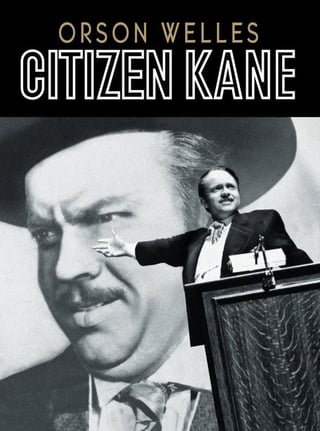For teachers seeking to integrate film content into English courses, and all those seeking a deeper knowledge of literary and film genres, this is a great course for you.
Focus and content
A semester-long course on film adaptations of literature might integrate units focused on several genres, or a broad range of works. For an intense summer session, however, we can make a virtue of necessity and narrow the focus to a single genre, yielding greater depth and burning no time transitioning between units. After successfully taking this approach to the family melodrama genre in Literature and Film a few years ago, I am excited to give noir literature and film noir the same treatment in June 2016. Class time will be split between discussions of noir fiction and films, and we will also screen most of our assigned films in class.
Why film noir and literature?
My interest in these movies and literary works stretches back to my first viewing of Citizen Kane at age 10 and my reading of Dashiell Hammett’s novels in my teen years. I look forward to sharing my enthusiasm for and insights about these texts and films with you. Studying noir as a genre, or artistic movement, depending on how we define it, affords us the opportunity to delve into influential literature and cinema from the 1930s,‘40s and early ‘50s, obviously a pivotal time in American history and culture. Noir stories reflect the hopes, fears and obsessions of two catastrophic but formative periods in our history: the Great Depression and World War II.
We will read and analyze novels by such brilliant and influential writers as James M. Cain, Raymond Chandler, and Patricia Highsmith, as well as view landmark films, including Citizen Kane (1941), Double Indemnity (1944), The Killers (1946), and Strangers on a Train (1950), along with the neo-noir masterpieces Chinatown (1974) and No Country for Old Men (2007). Overall, noir productively complicates our understanding of film and literary genres, as it tends to subvert conventional heroic archetypes and offer ambiguous narrative takes on enduring social and relational problems, as opposed to the frequently simplistic resolutions served up in standard genre fiction and Hollywood fare. In the final analysis, noir is a mood and an attitude as much as a genre; in the words of writer and film preservationist Eddie Muller, the essence of noir is “suffering with style.”
This course can enhance your teaching!
Beyond honing your analytical skills as a writer, you will lead discussion on one of the course films and texts, gaining experience facilitating in-depth academic conversations about movies as works of art. In addition, the final paper assignment offers you the opportunity to do an extended study of a literary work and film adaptation of your choice.
We will begin our journey into this dark cinematic and literary world with Citizen Kane, followed by James M. Cain’s Double Indemnity and Billy Wilder’s phenomenal film adaptation of that novel. I hope you will join us!
 Course title: Literature and Film
Course title: Literature and Film
CRN: 40318
Course number: ENGL 8085
Schedule: 5/31 - 7/1, Mondays and Wednesdays, 5:30 - 9:15 pm
ENGL 8085: Literature and Film will count as a literature elective course for MAT and MA program students.
Thanks to Professor Joseph Moser for sharing this post.

